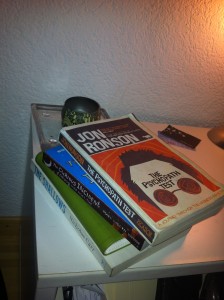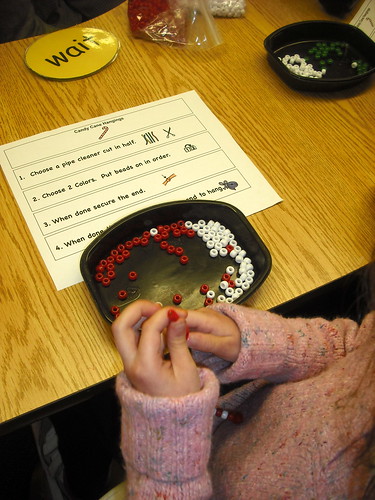Hi everyone,
I chose to use a picture of the stack of books beside my bed. I used to read one book at a time, thoroughly, but now I usually have 3-4 on the go. Is that because my reading patterns have simply changed as I’ve gotten older? Or, is my attention span changing to accomodate for jumps between books? Does this book jumping even matter? I don’t know, but I wonder these things as I look at my bedside table. I also see traditional books in silent war with the green NOOK I now own. If my bedside table books could speak, I wonder if they would make a case for why they should be preferred over the NOOK, how lovely their pages feel and smell, or why they should be packed into my bag for reading on the tram, and not the NOOK, even if they are heavier and take up more room. Books, ebook, iphone, laptop, the odd magazine or printed MET articles…reading experiences are, to borrow a word from Thinking about text and technology in Module 1, ‘weaving’ their ways ever deeper into experiences and bedrooms.
I’m from Vancouver, Canada originally but have been abroad for years. I work at an international school in Basel, Switzerland where I am a head of year for Grade 7, and I teach IB Psychology and English. I taught in Bahrain for 4 years before moving to Switzerland, and I taught random subjects for one year in a state school in England before that. I’ve been at my current school for 4 years, this is my 5th, and I’m embarrassed to say my German is coming along very slowly. There is a language battle that happens, too, in my mind, as I read in English, teach all day in English, get home and talk to my husband in English, watch bits of TV in English, read and listen to English news…it’s tough to fully engage with German, especially with the Swiss version spoken here. Therefore, I’ve made a decision to start reading German kids books. I’m married to a lovely, patient man who fully supports my MET journey, and that I hermit myself away for hours at a time with my computer. Our only dependent so far is two year old Boxer, Desi Crosby, who gets jealous of my laptop and lays her head right across the keys to get my attention. Battles are everywhere, it seems…:)
Ginelle










